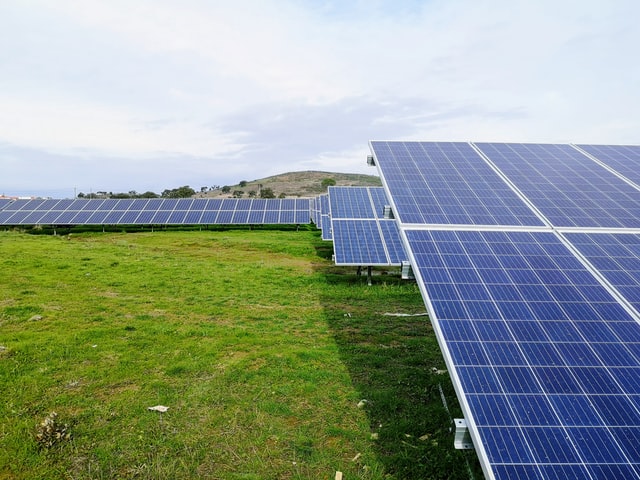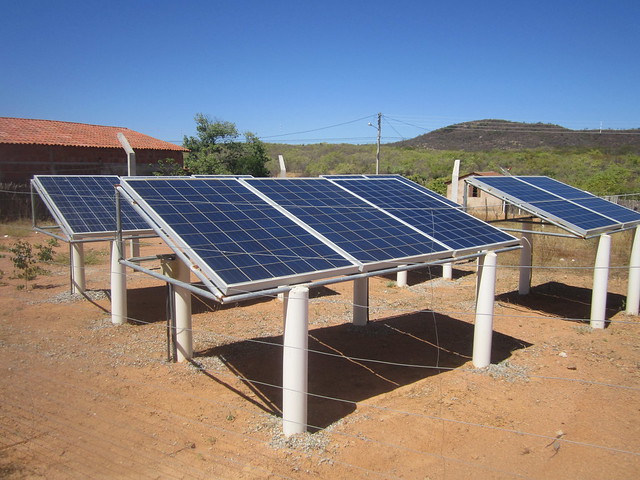
Saving Solar Energy
Thermal-power plants which store warm meant for over actors days might potentially resolve much of the difficulties with storing solar power.
Solar supporters like to boast that simply a couple of hundred square kilometers worth of photovoltaic or PV solar panels put in Southwestern deserts might potentially power the USA. Their specific methods contain a warning, needless to say: without backup power plants or pricey purchases of enormous batteries, flywheels, or extra energy-storage systems, this solar power supply would likely differ considerably with every passing cloud (along with the daily rise and fall in addition to seasonal ebbs and flows). Solar power startup firm Ausra, situated in Palo Alto, believes they have the response: solar-thermal-power plants that will convert sunshine into steam and efficiently store heat for gloomy days.
“Fossil-fuel fans normally explain that solar can not get the job done, that solar can not run in the evening, solar can not run the total economic climate,” states David Mills, Ausra’s owner as well as chairman. “That is absolutely precise if you do not have storage.” He admits that solar-thermal plants have a tendency to be one of the most efficient because in reality saving warmth is much easier when compared to storing electrical power. Mills estimates that, as a result of that advantage, solar-thermal plants ideal of holding sixteen hrs well worth of warmth could potentially supply over 90 percent of existing united state power needs at rates competitively priced with fossil fuel along with natural gas.

Major energies are choosing the theory. In July, the Pacific Gas, as well as Electric Company (PG&E), set a 25-year offer along with Ausra competing Solel Solar Solutions of Beit Shemesh, Israel, to acquire power from a 553-megawatt solar-thermal plant which Solel will be integrating into The golden state’s Mojave Desert. The plant can give 400,000 homes throughout north and also central California as quickly as it is completed in 2011. Florida Power & Light, in the meantime, hired Solel to upgrade the 1980s-era solar-thermal plants it takes care of in the Mojave.
Ausra, on the other hand, is discussing together with PG&E to supply electric power through a 175-megawatt plant which it means to construct in California, that it secured $40 million in endeavor financing this month.
Everything that identifies Ausra’s design will certainly be its general simplicity. In standard solar-thermal plants such as Solel’s, a lengthy trough of parabolic mirrors concentrates sunlight on a pipeline filled with a heat-transfer liquid, usually some kind of oil or salt water. The fluid, ultimately, produces steam to drive a turbine and create electrical power. Ausra’s solar batteries use mass-produced and also therefore affordable level mirrors, and additionally, they concentrate light onto pipelines filled up with water, consequently straight-producing steam. Ausra’s collection agencies create a decreased amount of power, nevertheless, that power is more affordable to create.
One megawatt’s worth of Ausra’s solar collectors have been generating steam in New South Wales, Australia, since 2004; the heavy steam is fed directly right into the turbines of a mainly coal-fired nuclear power plant. The tail end of the system– a proprietary heat-energy-storage system from Qrius — should become prepared by 2009.
Mills is not going to state precisely what products his firm’s system will probably warmth, although a number of the current solar-thermal plants by Ausra competitors– including one in Nevada which was introduced this particular summer in addition to the two being constructed in Spain near Granada– strategy to use molten-salt storage space. Molten salts have a tendency to be affordable salt solutions that will absorb considerable power after they thaw and also provide that energy once they freeze.
Exactly what Mills can easily proclaim for certain is the reality that Ausra’s storage system will absolutely lower its power-generation expenses. This is an amazing declaration since energy storage space may set you back perhaps up to twice the rate of electrical energy originating from photovoltaics or wind turbines.
Warm storage is a whole lot extra successful contrasted to electrical power storage: just 2 to 7 percent of the actual power is thrown away any time warm is banked inside a storage system, in contrast with losses of at the very least fifteen percent whenever energy is stowed away in a battery. A bigger factor declares Mills, would be the fact storage makes it possible for thermal plants to work with even more budget-friendly generators.
The end outcome is that Mills pledges that boosting storage along with price financial savings because of economies of scale as well as the decreased price of investment funding (just since banks know even more concerning solar-thermal innovations) will absolutely decrease Ausra’s existing ten to eleven cents per kilowatt-hour expense of power by 50 percent. By 2010, he is anticipating solar thermal to provide California with basic power extra budget-friendly when compared to gas, at the moment established by the state at 9.2 cents per kilowatt-hour.




